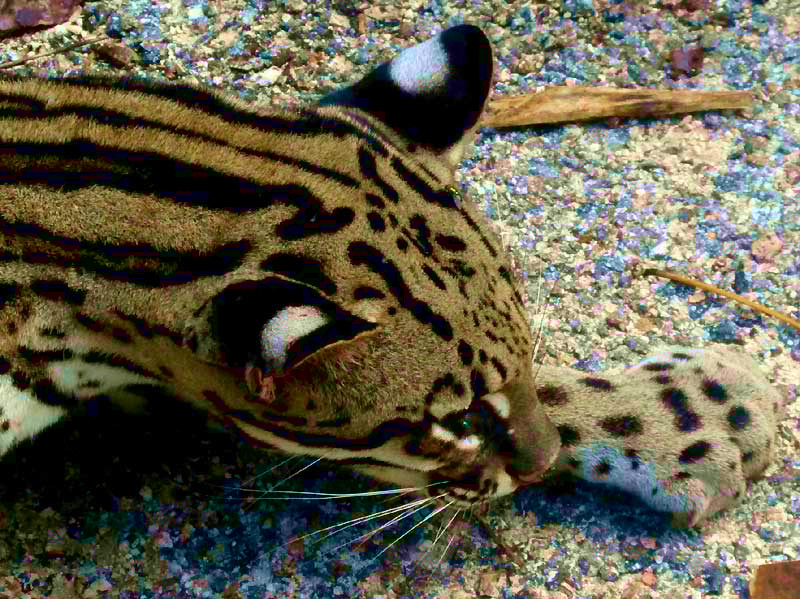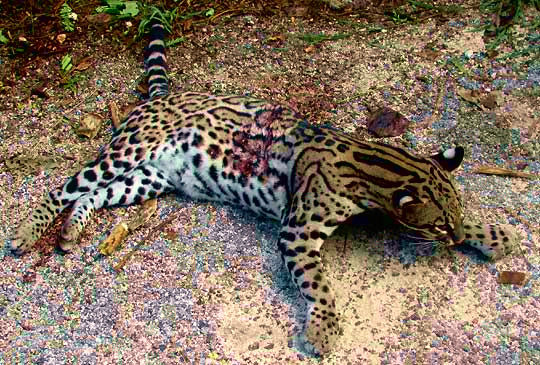Excerpts from Jim Conrad's
Naturalist Newsletter

from the August 23, 2015 Newsletter issued from Yuxunah, 20kms southwest of Chichén Intzá, Yucatán, MÉXICO
CHICKEN-EATING OCELOT
At the edge of town where a little street becomes a muddy foot-trail through the woods, about ten men, some astride bicycles, stood in a circle looking at something on the ground. I figured someone had killed a snake, maybe a big Boa Constrictor, which happens often enough. But when I joined the circle, what lay sprawled on the ground was what's shown below:

It was an Ocelot, FELIS PARDALIS, apparently killed by a shotgun blast to the midsection. Except for the wound, the creature looked in good shape, a glossy coat and either with a full stomach, or pregnant.
The men were speaking Maya, with one excitedly relating his story and the others commenting on every detail. When I joined the circle the oldest man present switched to Spanish and, maybe suspecting that I'd be sad to see such a pretty animal gunned down, explained that this was a chicken eater. Apparently he'd been shot going after someone's chickens. I didn't press for details. A close-up of the big cat's head and a foot is shown at the top of this page.
The man told me that in Maya an Ocelot is known as a Sacchikín, meaning "white ears." Hearing this I noted that in fact each ear bore a conspicuous white spot, though overall the ears bore more black than white. Maybe when you're hunting Ocelots in poor light it's the pair of white spots you look for, resulting in the Maya name.
From the Ocelot's perspective, maybe there's both good and bad about having a little Maya village inside your hunting range. Possibly the good is that Maya men are constantly chopping away at the woods, clearing for cornfields, and then abandoning the fields to weeds for several years so the soil can get built up again, plus continually they cut trees for construction and, at least men in Yaxunah, for the masks they carve to sell to tourists at Chichén Itzá. Such forest disruption favors rodents who feed on weed seeds, and rodents are Ocelot food.
The bad part for an Ocelot living near a little Maya village was clear enough from the bloody wound on the Ocelot's side.